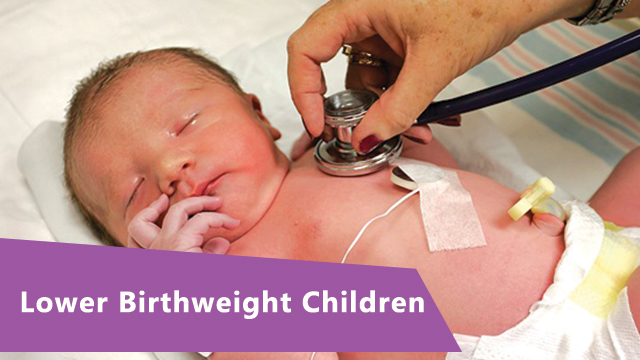Low birthweight is defined as a birthweight of less than 5 pounds, 8 ounces (2,500 grams). It is a major risk factor for heart disease, stroke, type 2 diabetes, and other chronic diseases in adulthood.
The exact mechanism by which low birthweight increases the risk of heart disease is not fully understood, but it is thought to be due to a number of factors, including:
- Abnormalities in the development of the heart and blood vessels
- Increased inflammation
- Altered metabolism
- Insulin resistance
People who were born with low birthweight are more likely to develop Coronary Artery Disease (CAD), which is the narrowing of the arteries that supply blood to the heart. CAD can lead to heart attack, stroke, and other serious health problems.
The risk of heart disease is highest in people who were born with very low birthweight (less than 3 pounds, 5 ounces or 1,500 grams). However, even people who were born with slightly low birthweight (between 5 pounds, 8 ounces and 6 pounds, 13 ounces or 2,500 to 2,900 grams) are at increased risk.
There are a number of reasons why low birthweight increases the risk of heart disease. One reason is that it can lead to abnormalities in the development of the heart and blood vessels. For example, babies born with low birthweight may have smaller hearts and narrower blood vessels, which makes them more susceptible to heart disease.
Another reason why low birthweight increases the risk of heart disease is that it can lead to increased inflammation. Inflammation is a process that damages the lining of the blood vessels, which can make it easier for plaque to build up and cause a heart attack or stroke.
Low birthweight can also lead to altered metabolism and insulin resistance. Metabolism is the process by which the body converts food into energy. Insulin resistance is a condition in which the body does not respond normally to insulin, a hormone that helps the body use glucose for energy. Both altered metabolism and insulin resistance can increase the risk of heart disease.
The good news is that there are things you can do to reduce your risk of heart disease if you were born with low birthweight. These include:
- Eating a healthy diet
- Exercising regularly
- Maintaining a healthy weight
- Managing your blood pressure, cholesterol, and blood sugar levels
If you are concerned about your risk of heart disease, talk to your doctor. They can help you develop a personalized plan to reduce your risk.
Here are some additional things to keep in mind about the link between low birthweight and heart disease:
- The risk of heart disease is higher in people who were born with low birthweight, regardless of their gender, race, or ethnicity.
- The risk of heart disease is highest in people who were born with low birthweight and who also have other risk factors for heart disease, such as high blood pressure, high cholesterol, or diabetes.
- The risk of heart disease can be reduced by taking steps to improve your overall health, such as eating a healthy diet, exercising regularly, and maintaining a healthy weight.
If you were born with low birthweight, it is important to talk to your doctor about your risk of heart disease. They can help you develop a personalized plan to reduce your risk and stay healthy.
Read more...


Comments
Post a Comment